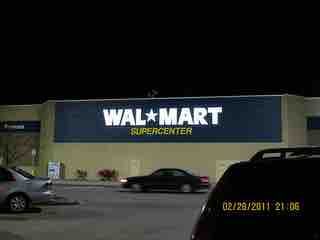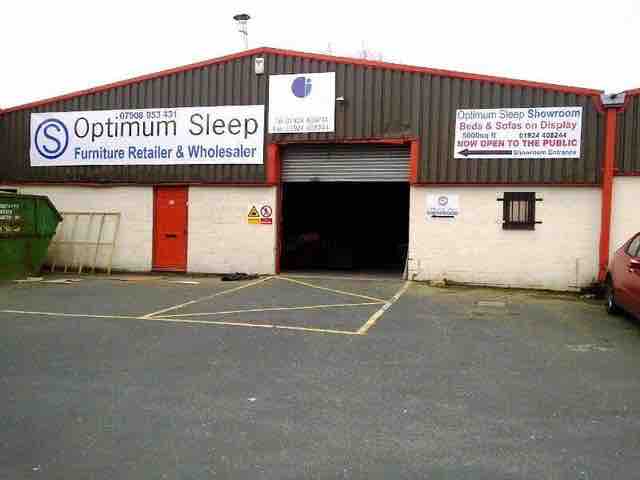Distribution Centers Versus Direct Store Delivery
Depending on the product being sold and ultimate end user, companies can choose a marketing channel strategy that involves utilizing distribution centers (wholesalers) or moving their products directly to a store, or retailer. There are advantages and disadvantages to both and several different types of each.
Retailers
Stores vary in size, in the kinds of services that are provided, in the assortment of merchandise they carry, and in many other respects. Most stores are small and have weekly sales of only a few hundred dollars. A few are extremely large, having sales of $500,000 or more on a single day. An example of a large retailer would be Wal-Mart shown here

Retailers
Walmart is one of the largest and most successful retailers in history.
There are many different kinds of retailers, including:
- Department Stores - Department stores are characterized by their very wide product mixes. That is, they carry many different types of merchandise that may include hardware, clothing, and appliances.
- Chain Stores - Chain stores are able to buy a wide variety of merchandise in large quantity discounts. The discounts substantially lower their cost compared to costs of single unit retailers. As a result, they can set retail prices that are lower than those of their small competitors, and thereby increase their share of the market. Furthermore, chains are able to attract many customers because of their convenient locations, made possible by their financial resources and expertise in selecting locations.
- Discount Houses - Discount houses are characterized by an emphasis on price as their main sales appeal. Merchandise assortments are generally broad, including both hard and soft goods, but assortments are typically limited to the most popular items, colors, and sizes.
- Franchises - Over the years, large chain store retailers have posed a serious competitive threat to small storeowners. Franchising has come about in response to this trend.
- Non-store Retailing - Non-store retailing describes sales made to ultimate consumers outside of a traditional retail store setting. In total, non-store retailing accounts for a relatively small percentage of total retail sales, but it is growing and very important with certain types of merchandise, such as life insurance, cigarettes, magazines, books, CDs, and clothing. Online vendors, such as Amazon, or a good example of non-store retailers. Vending machines are another type of nonstore retailing. This method of retailing is an efficient way to provide continuous service. It is particularly useful with convenience goods.
In order to decide on the types of retailers to include in its marketing channel, a firm must first understand the buying specifications of its consumers. The firm must also understand the buying specifications of the retailers themselves. Although some retailers prefer to buy directly from the manufacturer, others would rather buy from local distributors who have lenient credit terms and offer a wide array of merchandise.
Wholesalers
Wholesaling includes all activities required to market goods and services to businesses, institutions, or industrial users who are motivated to buy for resale or to produce and market other products and services. The vast majority of all goods produced in an advanced economy have wholesaling involved in their marketing. This includes manufacturers who operate sales offices to perform wholesale functions and retailers who operate warehouses or otherwise engage in wholesale activities. Wholesale volume is greater than that of retail because it includes sales to industrial users as well as merchandise sold to retailers for resale. An example of a wholesaler is Optimum Sleep, which sells furniture wholesale.

Wholesalers
Optimum Sleep is an example of a furniture wholesaler.
Wholesalers perform a number of useful functions within the channel of distributions. These may include all or some combination of the following:
- Warehousing - the receiving, storage, packaging, and the like necessary to maintain a stock of goods for the customers they service.
- Inventory Control and Order Processing - keeping track of the physical inventory, managing its composition and level, and processing transactions to insure a smooth flow of merchandise from producers to buyers and payment back to the producers.
- Transportation - arranging the physical movement of merchandise.
- Information - supplying information about markets to producers and information about products and suppliers to buyers.
- Selling - personal contact with buyers to sell products and service.
By providing this linkage, wholesalers assist both the producer and the buyer. From the buyer's perspective, the wholesaler typically brings together a wide assortment of products and lessens the need to deal directly with a large number or producers. The wholesaler assists the producer by making products more accessible to buyers. It provides the producer with wide market coverage information about local market trends in an efficient manner.